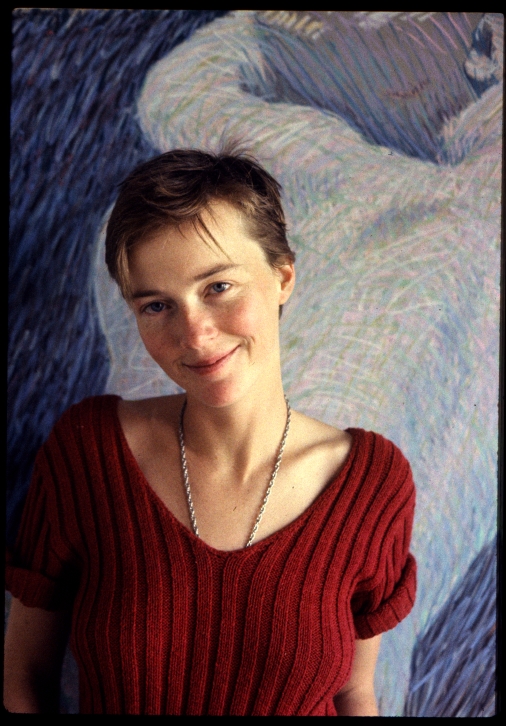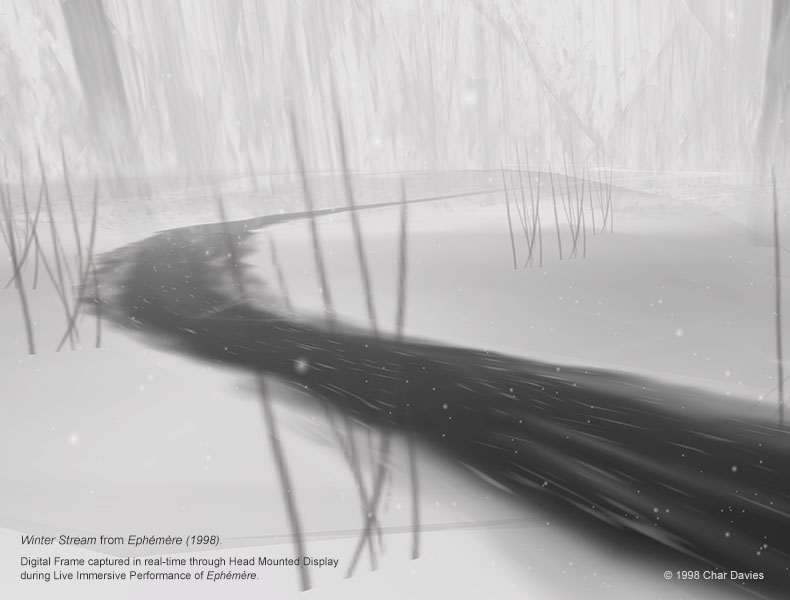
Char Davies is one of the earlier pioneers of artistic virtual reality experiences. She began her career as a painter, but began exploring digital media and 3D computer rendering in the mid-1980’s, founding the 3D software company Softimage in 1987.
Char approaches VR from many different angles. Of course the technical and artistic sides of it are at the forefront in terms of what you see, but she’s also written and talked extensively about the metaphysics of virtual reality, and the philosophy behind what it means to immerse yourself in a virtual space. One of her primary concerns has been challenging the notion that the most important advances in virtual rendering are those which push the bar towards photorealism/ objective realism. An interesting aspect of her VR work is that the environments aren’t created through traditional methods of 3D modeling, but instead are created entirely through algorithms and transparency maps.
Her two most famous projects are Osmose (1995) and Ephémère (1998), which both utilized very unconventional control schemes in order to have the user experience changing virtual environments. This was the mid-90’s, and interactive media developers were still experimenting with the infinitely many possible input systems that could be used to navigate a character and camera around in a real-time 3D space. The mapping of control inputs was far less standardized than what we have today. But Char’s major projects during this time were on a whole new level when it comes to experimentation in the techniques of immersion. The two projects, Osmose and Ephémère, had the immersant (a term coined by Davies) moving around in the 3D environment by using their balance and breathing. The user is able to breathe in to float upwards, and out to move downwards, and shift their balance in order to change directions. Both of these projects utilized a head-mounted display.
Osmose (1995)

Ephémère (1998)

Even in her more recent work, she continues to challenge the norms that have become somewhat standardized in the field of 3D rendering. In a publication she wrote in 2003 titled “Rethinking VR: Key Concepts and Concerns”, the first bullet point of the article challenged the notion of virtual reality as a “reinforcement of the cartesian worldview”, arguing that VR has the potential to present entirely new ways of presenting a 3D space rather than just a bunch of points defining geometry on a 3-dimensional X,Y,Z grid (cartesian coordinate system). Some of her current work has been the development of software to edit virtual environments in ways that can’t be done with conventional point-cloud technologies.